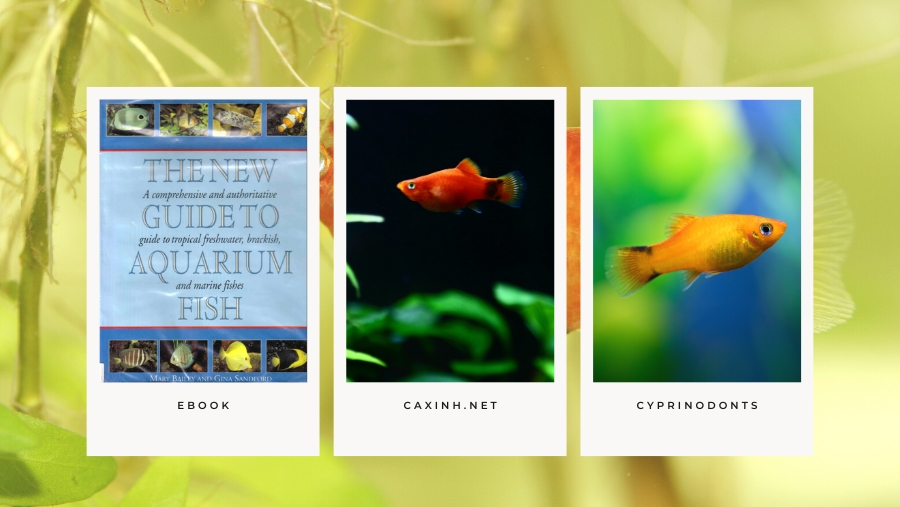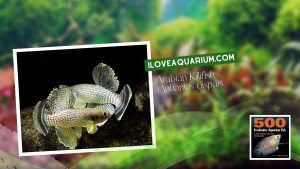Cyprinodonts
The cyprinodonts are a large group of relatively small fresh-and brackish water fishes. Because they have teeth in their jaws they are often referred to as toothcarps. Aquarists tend to divide them into two groups, those which produce live fry (livebearers) and those which lay eggs (killifishes).
Most of the livebearers in the aquarium trade belong to the family Poeciliidae, but other, not necessarily closely related, families are also livebearers, including the Anablepidae, Goodeidae, and Hemirhamphidae.
In this section we will be dealing with only those fishes which are Cyprinodonts, so halfbeaks will be found in the Miscellaneous chapter. One other livebearer you will have to look for elsewhere is Anableps anableps (four-eyed fish); these require very specialized brackish conditions, so full details regarding their lifestyle and captive requirements may be found in the brackish chapter.
Although you will find killifishes in this chapter, you may find it a little more difficult to locate the real thing! Despite their often stunning beauty, their (largely undeserved) reputation for being “difficult”, specialist fishes has led to few dealers stocking them. Do not be deterred – locating unusual fishes often adds to the fun of our hobby.
LIVEBEARING TOOTHCARPS
These livebearers will probably be the first fishes encountered by the novice aquarist, although they are not necessarily the best fishes for the new fishkeeper. Yet some will survive and breed in a newly set up tank – “cultivated” platies are probably the best for this, followed by guppies and cultivated swordtails.
The Poeciliidae
Most of the livebearing fishes encountered by the hobbyist belong to this “American” family. We use the term “American” because representatives are native to the southern states of the USA, Central America, and South America as far south as Argentina. They are also native to many of the Caribbean islands. This is not, however, the limit of their distribution.
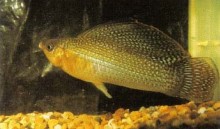
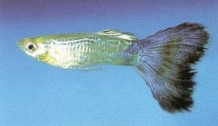
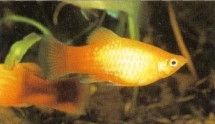
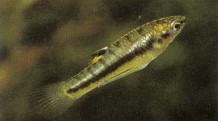
Originally, the guppy hails from northern South America, Barbados, and Trinidad. It is now bred commercially in many countries, from the fish farms of the USA to those of the Far East, Israel, and Europe. Accidental escapes from these fish farms have allowed the guppy to extend its range in recent times, but in the days of the British Empire guppies were introduced all over the tropics to eat mosquito larvae and help reduce the risk of Malaria. Later Gambusia holbrooki were found to be more efficient for this purpose and were introduced to many parts of the world. Indeed the common name of Gambusia holbrooki is mosquito fish because of this connection. In recent times the resulting damage to native species of fish has become apparent, with dozens in decline or close to extinction because of these introduced fishes. Nowadays the mosquito fish is also dubbed “fish killer” and sometimes even referred to as “biological pollution” because of the damage it is doing to native faunas.
Since all livebearers use internal fertilization of the eggs as part of their reproductive strategy, they have had to evolve a method of transferring sperm from the male to the female. In Poeciliids the anal fin of the male is developed into a gonopodium, a sexual organ formed by the fusion of the third, fourth, and fifth rays of the fin. At its tip there are various spines and hooks which are often called “holdfasts”, and which are used by the male to hold on to the female during mating. At this time the gonopodium is directed forwards and a groove formed down which the sperm is channelled to the cloaca of the female.
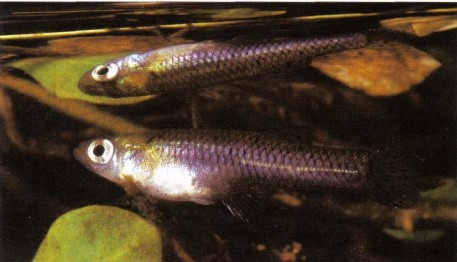



In all livebearers, the young fishes develop in the body cavity of the female and are born fully formed and able to fend for themselves. Since they are so well advanced at birth it is not necessary for them to produce hundreds of young at a time; broods vary but 20 to 40 seems to be the average. Large female swordtails, however, have been known to produce over 250 fry at one time. Interestingly enough, females of most, if not all, species of the Poeciliidae are capable of storing sperm, so many successive broods can be produced from a single mating. In this family the best known genera are Poecilia, which includes the guppy, and Xiphophorus, which includes the 48 platies and swordtails.

